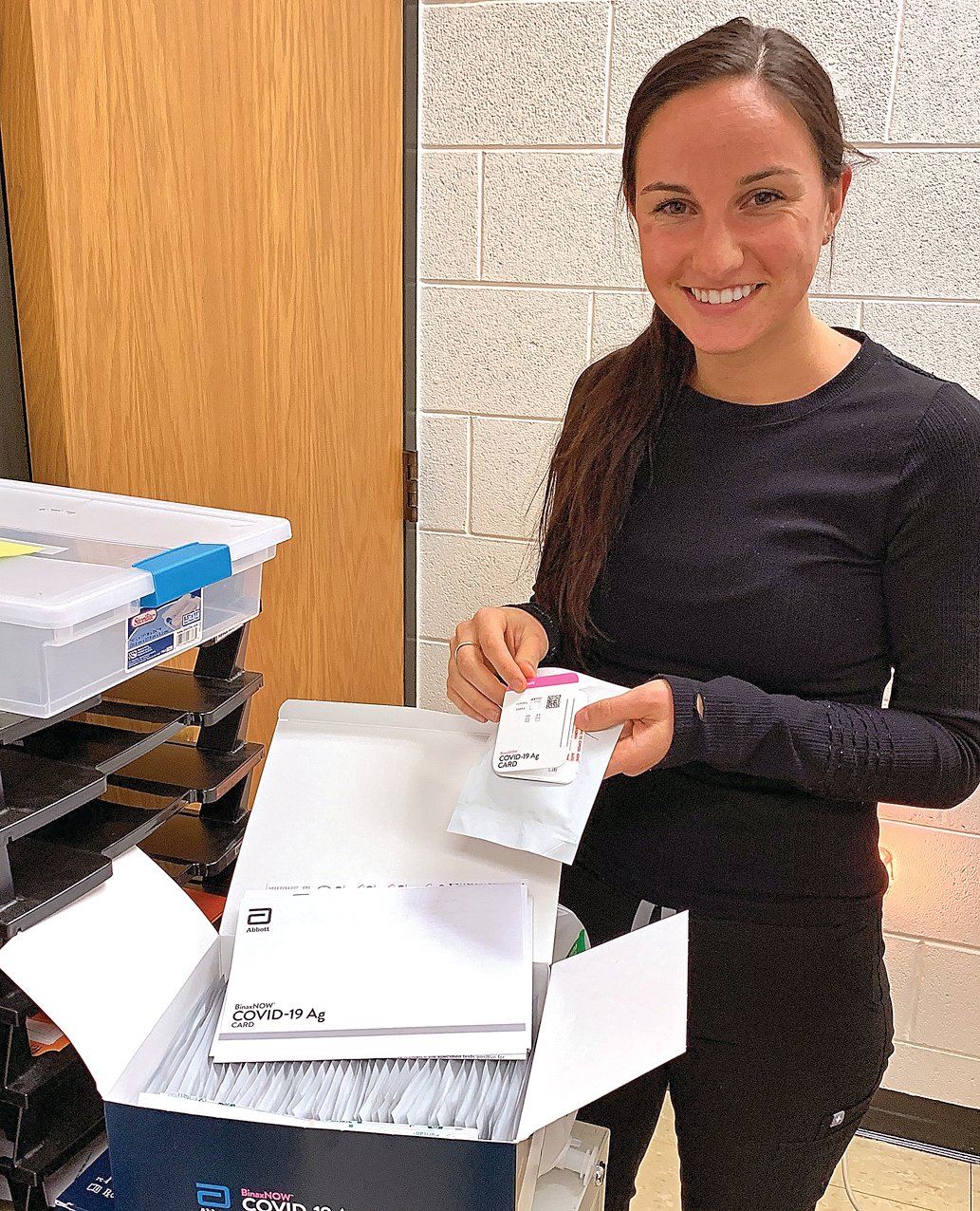A message for our readers
The Galena Gazette is providing all of its news stories and photos of the COVID-19 pandemic with no payment required as a public service and in an effort so you can be totally knowledgeable as to how the pandemic affects you. Please consider a print or online subscription to support this vital reporting by a locally owned business .
Galena schools offer COVID testing: Officials hope faster results will help with fewer quarantined staff and students
GALENA–Each school day, for one hour in the morning, Emily Rowe, Galena School District nurse, dons full personal protective equipment–a N95 mask, gown, double gloves, face field–to administer rapid response COVID-19 tests to symptomatic students.
Within 15 minutes, those students and their parents have an answer, when either one line appears on the test card for negative or two for positive.
“I think this is going to be huge for our district,” said Rowe, a week into the testing routine.
Galena is the first district in the area to offer this free testing option after the Illinois Department of Public Health (IDPH) and the Jo Daviess County Health Department presented districts with the option in October.
At that time, Superintendent Tim Vincent began the approval process for a temporary waiver for the school to serve as a lab. Vincent reached out to Midwest Medical Center for a standing order to test. He worked with Dr. Matt Gullone and staff to arrange the protocols to ensure the testing is done according to the correct standards.
Officials decided to offer the testing as a drive-up service each weekday morning for one hour at Galena Middle School, where there is more space and the ability to maintain confidentiality, Vincent said.
After about a month, approval was granted.
The district has boxes of the tests ready to go, and the supply will be replenished as necessary by the health department, Rowe explained. The health department also assisted in securing the necessary personal protective equipment.
“They have been extremely supportive,” Rowe noted of health department staff.
There is a limited scope of people who qualify to be tested, Vincent explained. Students and staff have to be symptomatic–fever or chills, cough, shortness of breath or difficulty breathing, fatigue, muscle or body aches, headache, new loss of taste or smell, sore throat, congestion or runny nose, nausea or vomiting and diarrhea. If students or staff are quarantined as a result of exposure to a positive COVID case, they are not eligible for a rapid test. IDPH guidelines do not allow people to test out of quarantine under any circumstances.
Those students with high temperatures or loss of taste and smell need a standard test, RT-PCR COVID test.
If negative, asymptomatic members of the household may return to school. The student or staff member with symptoms needs to stay home for 24 hours without symptoms or alternative diagnosis.
If the test is positive, contact tracing can begin immediately, Rowe said, and that’s a big deal since there was a lag time previously as they waited for results to come in.
Vincent sees the testing as a way to “assist in the constant battle we are fighting against ‘quarantined’ staff and students.”
As of last week, the district was at the lowest percentage of students and staff quarantined–between 7 and 8 percent–since early October, Vincent reported. At one point, in mid-November, the district climbed to 23 percent out of school. He said in a non-COVID year, the district would expect to have around 40 students out on any given day, so the 59 students out one day last week was exactly what he’s hoping to continue to see.
The Galena School District has not had to go entirely remote at all this school year. There have been 26 positive COVID cases but none had transmission traced to the schools.
On the front line, conducting the testing, Rowe said it’s gone very smoothly so far.
In her full gear, she waits inside while middle school principal Ben Soat or Vincent make sure the necessary waiver forms are completed for those being tested.
Rowe then approaches the vehicle and collects the sample with the long nasal swab in both nostrils. The sample is then inserted into the test card and the reactant added. After 15 minutes, the results appear.
“It’s been great,” she noted after the second day of testing when she conducted 11 tests on students and one for a staff member. In the first three days, 20 tests were completed.
 Fair, 32.0° F
Fair, 32.0° F


